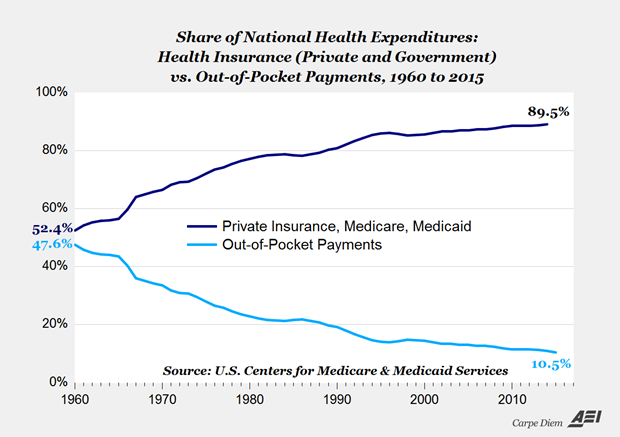Here is Mark J. Perry comparing cosmetic surgery to the rest of the health care arena at the Foundation for Economic Education:
Between 1998 and 2016 prices for “Medical Care Services” in the US (as measured by the BLS’s CPI for Medical Care Services) more than doubled (+100.5% increase) while the prices for “Hospital and Related Services” nearly tripled (+177% increase). Those increases in the costs of medical-related services compare to only a 47.2% increase in consumer prices in general over that period. On an annual basis, the cost of medical care services in the US have increased almost 4% per year since 1998 and the cost of hospital services increased annually by 5.8%.
In contrast, overall inflation averaged only 2.2% per year over that period. The only consumer product or service that has increased more than medical care services and about the same as hospital costs over the last several decades is college tuition and fees, which have increased nearly 6% annually since 1998 for public universities.
One of the reasons that the costs of medical care services in the US have increased more than twice as much as general consumer prices since 1998 is that a large and increasing share of medical costs are paid by third parties (private health insurance, Medicare, Medicaid, Department of Veterans Affairs, etc.) and only a small and shrinking percentage of health care costs are paid out-of-pocket by consumers.
According to government data, almost half (47.6%) of health care expenditures in 1960 were paid by consumers out-of-pocket, and by 1990 that share had fallen to 19% and by 2015 to only 10.5% (see chart above).
It’s no big surprise that overall health care costs have continued to rise over time as the share of third-party payments has risen to almost 90% and the out-of-pocket share approaches 10%. Consumers of health care have significantly reduced incentives to monitor prices and be cost-conscious buyers of medical and hospital services when they pay only about 10% themselves, and the incentives of medical care providers to hold costs down are greatly reduced knowing that their customers aren’t paying out of pocket and aren’t price sensitive.
Read more: Fee.org
Image credit: www.fee.org.

